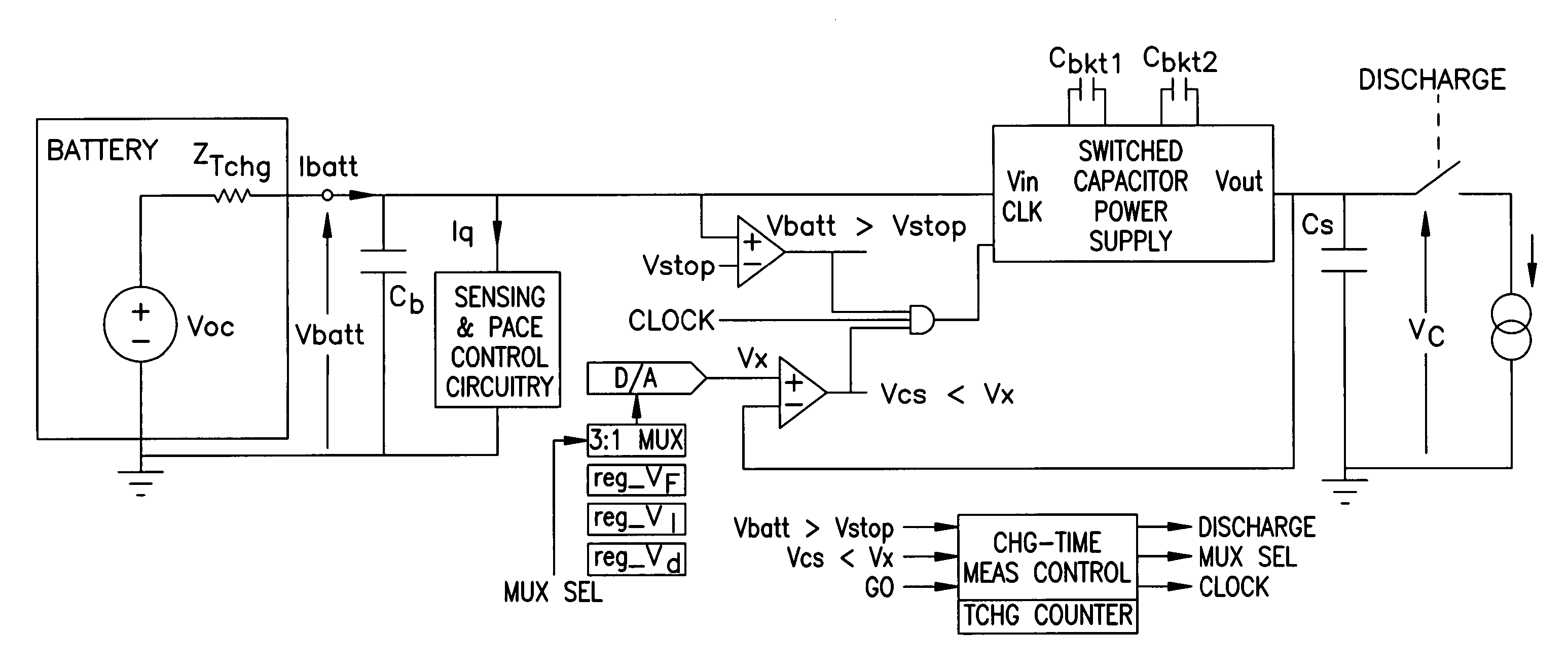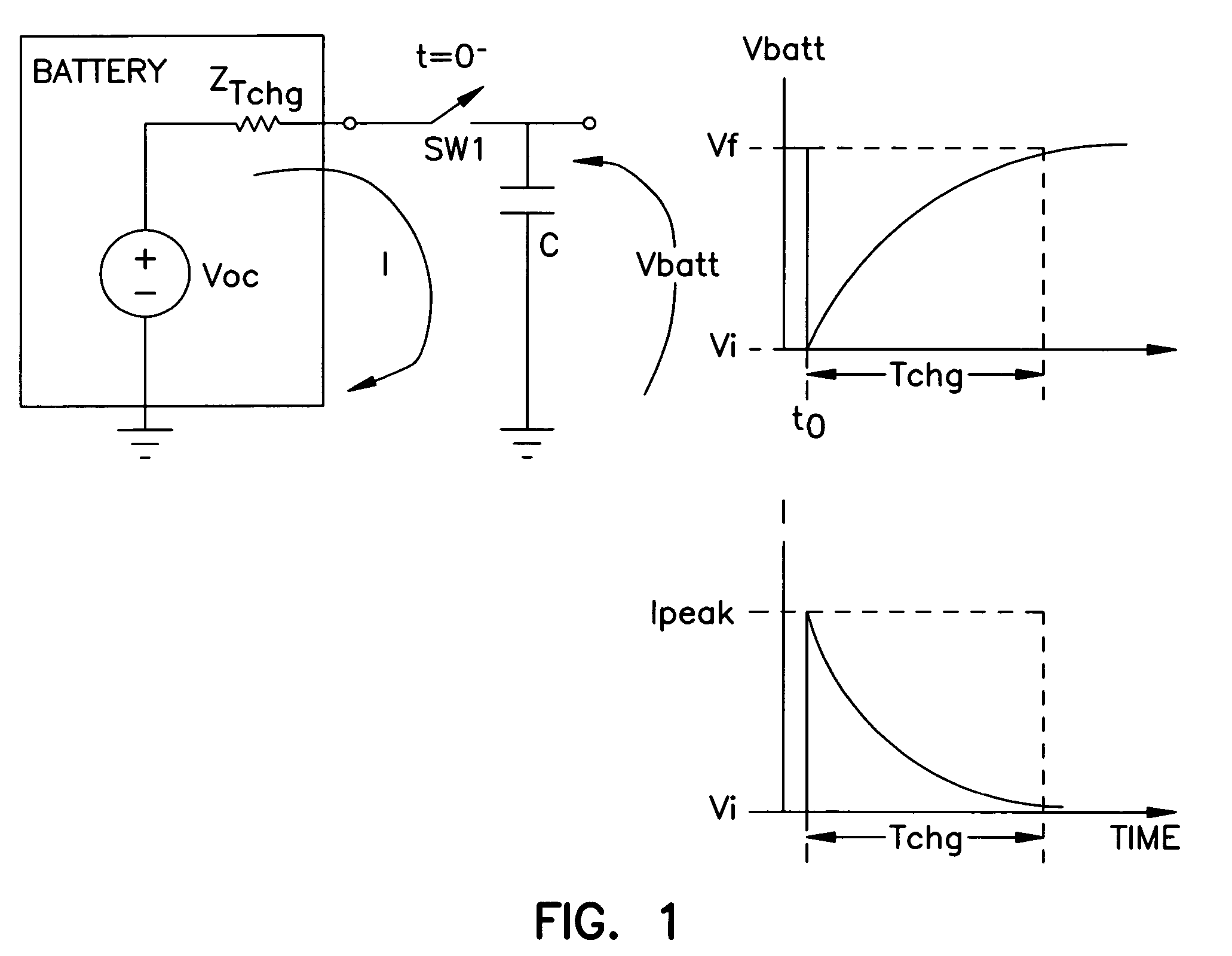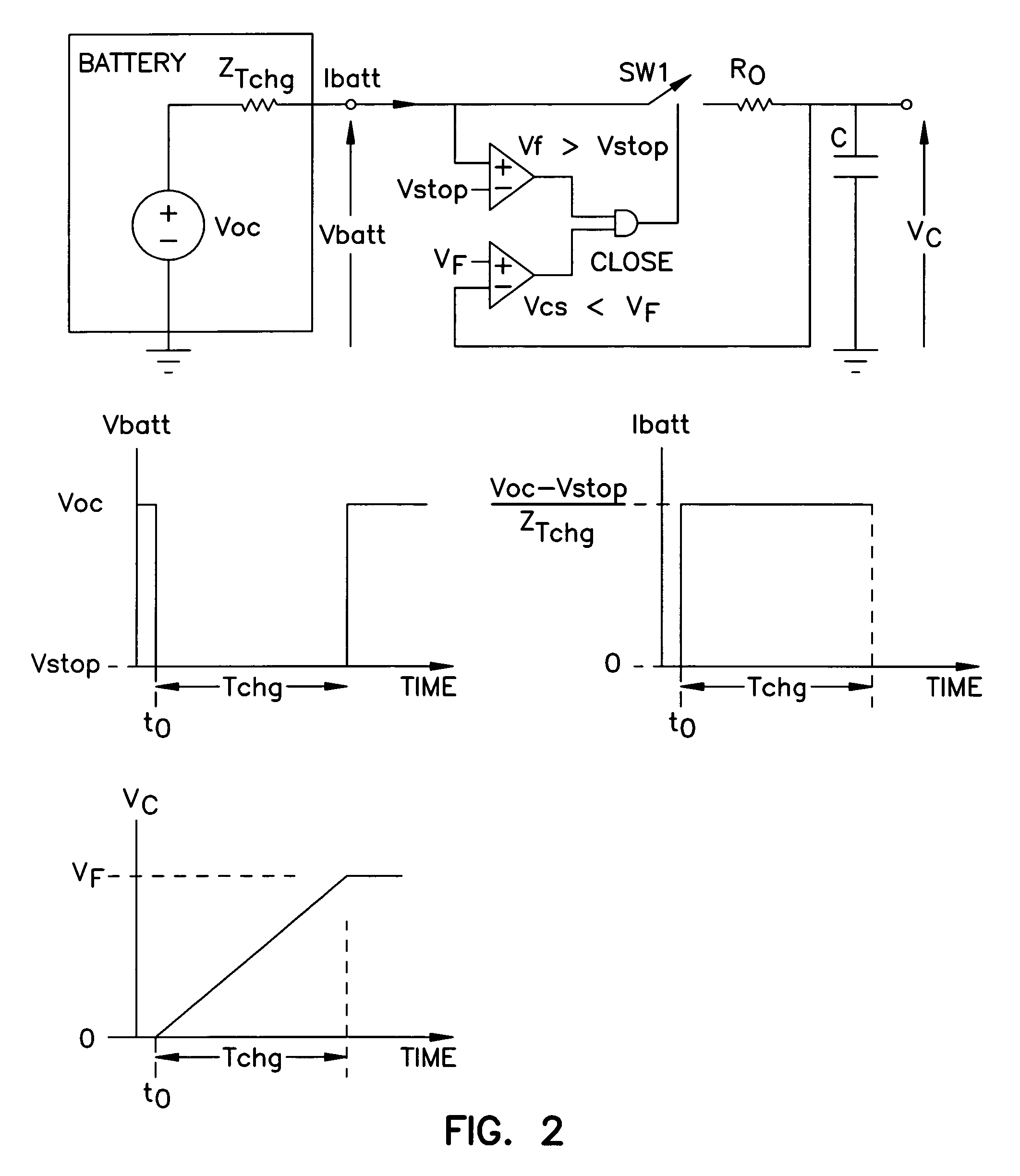Method for monitoring end of life for battery
a battery and end of life technology, applied in the field of battery end of life monitoring, can solve the problems of insufficient life of such cells to outlast patients, constant increase of internal impedance, and inability to accurately estimate the replacement time of batteries, etc., and achieve the effect of easy estimation of the estimated replacement time of batteries
- Summary
- Abstract
- Description
- Claims
- Application Information
AI Technical Summary
Benefits of technology
Problems solved by technology
Method used
Image
Examples
Embodiment Construction
[0025]The term “lithium-type” as used herein refers to the lithium iodine battery as well as other lithium systems such as those disclosed in the aforementioned article of Parsonnet et al. More broadly, the term “lithium-type” refers to a battery or cell having approximately the characteristics displayed by the lithium iodine battery. The cell has an effective open circuit voltage E0 which, by way of illustration, is about 2.8 volts for the Catalyst Research battery. The effective internal impedance in series with E0 comprises 2 impedance components. The first impedance component, shown as RL, represents the resistance to the travel of Li+ ions through the LiI layer. This resistance is a direct linear function of the charge or energy drawn from the battery, such that this component is linear as a function of battery usage. As is well understood in the art, as the charge production from the battery increases (higher Milliampere Hours), the Internal Impedance increases. The increased ...
PUM
 Login to View More
Login to View More Abstract
Description
Claims
Application Information
 Login to View More
Login to View More - R&D
- Intellectual Property
- Life Sciences
- Materials
- Tech Scout
- Unparalleled Data Quality
- Higher Quality Content
- 60% Fewer Hallucinations
Browse by: Latest US Patents, China's latest patents, Technical Efficacy Thesaurus, Application Domain, Technology Topic, Popular Technical Reports.
© 2025 PatSnap. All rights reserved.Legal|Privacy policy|Modern Slavery Act Transparency Statement|Sitemap|About US| Contact US: help@patsnap.com



